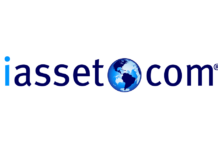Acucorp, Inc. today announces its support for Red Hat Enterprise Linux 3, . This support will enable customers, which include Fortune-class corporations, independent software vendors (ISVs), and government agencies, to leverage their existing COBOL assets in a state-of- the-art enterprise Linux environment. By doing so, these customers can enhance their application’s scalability, stability and performance—significantly decreasing their total cost of ownership while increasing their return on investment by maintaining and modernizing their legacy applications on the Red Hat Enterprise Linux platform.
Acucorp’s announcement of support for Red Hat Enterprise Linux 3 coincides with its official designation as a Red Hat Ready Partner. This designation requires companies to meet certain certification guidelines, confirm that their software runs on Red Hat Enterprise Linux, and agree to support customers who deploy their applications on the Red Hat platform.
“Acucorp is committed to the Linux platform and, more specifically, Red Hat Enterprise Linux,” explains Joe Seiley, Acucorp’s Director, Strategic Partnerships. “The fact that we offered the world’s first COBOL compiler on Linux and now support the latest enterprise-ready distribution from Red Hat only reinforces this industry-leading commitment. Using our extend® solutions, customers can deploy robust, cost-effective legacy systems that combine the benefits of the Linux operating environment with the strength of proven business applications and data, without undertaking the cost and risk of application replacement strategies.”
Featuring unparalleled portability to more than 600 different platforms including virtually all distributions of Linux, Acucorp’s extend® provides innovative technologies to support COBOL interoperability with .NET, J2EE and XML as well as many other computing languages and application servers via Service-Oriented Architecture (SOA) and Web services. In addition, extend offers COBOL-based: Web or mobile deployment, graphical user interface (GUI) development, thin client architecture design, and relational database management system (RDBMS) access.












